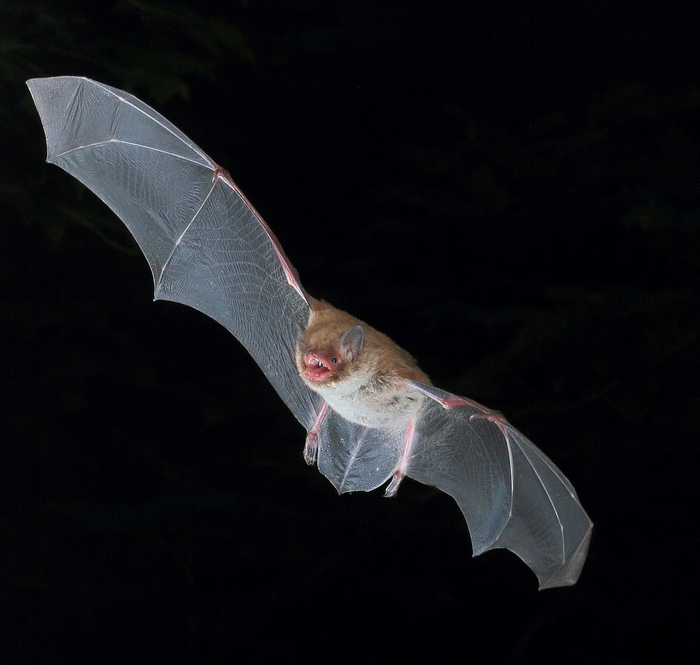Bats use distinct structures in the larynx to produce high-frequency echolocation calls and lower-frequency social calls, according to a study by Coen Elemans at the University of Southern Denmark and colleagues, publishing November 29th in the open access journal PLOS Biology. The structures used to make the low-pitched calls are analogous to those used by death metal vocalists in their growls.

Credit: Jens Rydell (CC-BY 4.0, https://creativecommons.org/licenses/by/4.0/)
Bats use distinct structures in the larynx to produce high-frequency echolocation calls and lower-frequency social calls, according to a study by Coen Elemans at the University of Southern Denmark and colleagues, publishing November 29th in the open access journal PLOS Biology. The structures used to make the low-pitched calls are analogous to those used by death metal vocalists in their growls.
Echolocating bats have an extremely large vocal range of 7 octaves, compared to just 3 to 4 octaves for most mammals, including humans. Their echolocating calls and social calls range between 1 and 120 kilohertz, making them unique among mammals. To understand how different vocal structures allow bats to create such a wide range of calls, researchers extracted the larynx from five adult Daubenton’s bats (Myotis daubentonii), mounted and filmed them at 250,000 frames per second while applying a flow of air to mimic natural vocalization. They then used machine learning to reconstruct the motion of vocal membranes that were obscured by other structures.
They found that air pressure generated self-sustaining vibrations in the vocal membrane at frequencies between 10 and 70 kilohertz, sufficient to produce high-frequency echolocation calls. In contrast, thick folds of membrane just above the vocal cords, called “ventricular folds,” vibrated at frequencies between 1 and 3 kilohertz, and are likely involved in producing the animals’ lower-frequency social calls. Some humans also use their ventricular folds to produce low-frequency vocalizations, such as death metal growls and Tuvan throat singing.
The study is the first to directly observe self-sustained vibrations in bat vocal structures that can generate echolocation and social calls. Natural selection to produce high-frequency calls for echolocating prey and much lower-frequency calls for social communication have created distinct evolutionary pressures that expanded the vocal range of bats, the authors say.
The authors add, “We show that bats vibrate extremely thin and light membranes extending from their vocal folds to make their high-frequency ultrasonic calls for echolocation. To extend their limited lower vocal range, bats make aggressive calls with their ventricular folds – as in death metal growls.”
#####
In your coverage, please use this URL to provide access to the freely available paper in PLOS Biology: http://journals.plos.org/plosbiology/article?id=10.1371/journal.pbio.3001881
Citation: Håkansson J, Mikkelsen C, Jakobsen L, Elemans CPH (2022) Bats expand their vocal range by recruiting different laryngeal structures for echolocation and social communication. PLoS Biol 20(11): e3001881. https://doi.org/10.1371/journal.pbio.3001881
Author Countries: Denmark
Funding: This work was supported by the Villum foundation grant 00025380 and Danish Research council grant DFF 8021-00155A to LJ, and Danish Research council grant DFF 7014-00270 to CPHE. The funders had no role in study design, data collection and analysis, decision to publish, or preparation of the manuscript.
Journal
PLoS Biology
DOI
10.1371/journal.pbio.3001881
Method of Research
Experimental study
Subject of Research
Animals
COI Statement
Competing interests: The authors declare that no competing interests exist.




